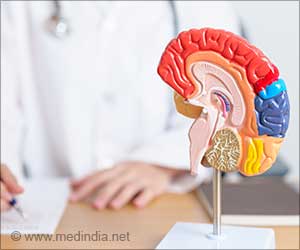New research indicates that stimulating the brain with a non-invasive technique called transcranial direct current stimulation (tDCS) can improve a person's skill at handling delicate tasks.
According to the Drs. Gottfried Schlaug and Bradley Vines from Beth Israel Deaconess Medical Center and Harvard Medical School, tDCS could improve the use of a person's non-dominant hand.In tDCS, electrodes are attached to the scalp and a weak direct current is passed the scalp and skull to alter the excitability of the underlying brain tissue.
The treatment has two principal modes depending on the direction in which the current runs between the two electrodes. Brain tissue that underlies the positive electrode (anode) becomes more excitable, and it is the other way round for brain tissue that underlies the negative electrode (cathode).
For the study, the researchers tested the effects of tDCS over one side or both sides of the brain on sixteen healthy, right-handed volunteers, as well as testing the effect of simply pretending to carry out the procedure. The test involved using the fingers of the left hand to key in a series of numbers displayed on a computer screen.
The participants were didn't know which of the three procedures they were receiving.
The researchers saw striking results- a 24 percent improvement in the subjects' scores was seen after stimulating the brain over both the right and left motor regions ('dual hemisphere' tDCS), much better than stimulating the brain only over one motor region or using the sham treatment.
Advertisement
The tDCS is different from electroconvulsive therapy, which uses currents around a thousand times higher.
Advertisement
The study was published in the open access journal BMC Neuroscience.
Source-ANI
RAS/SK













